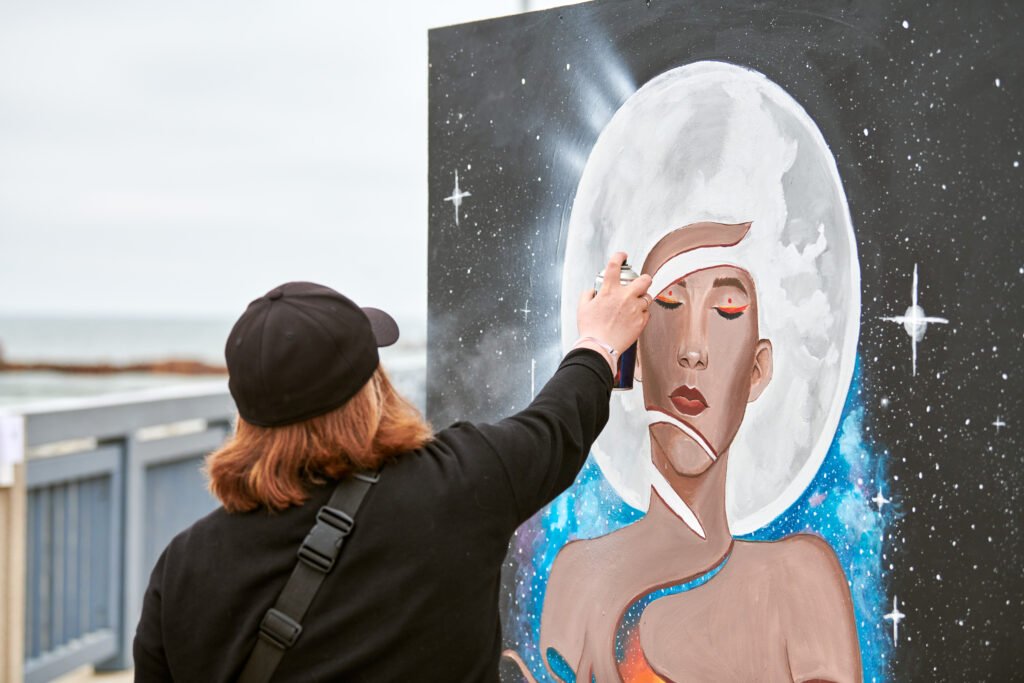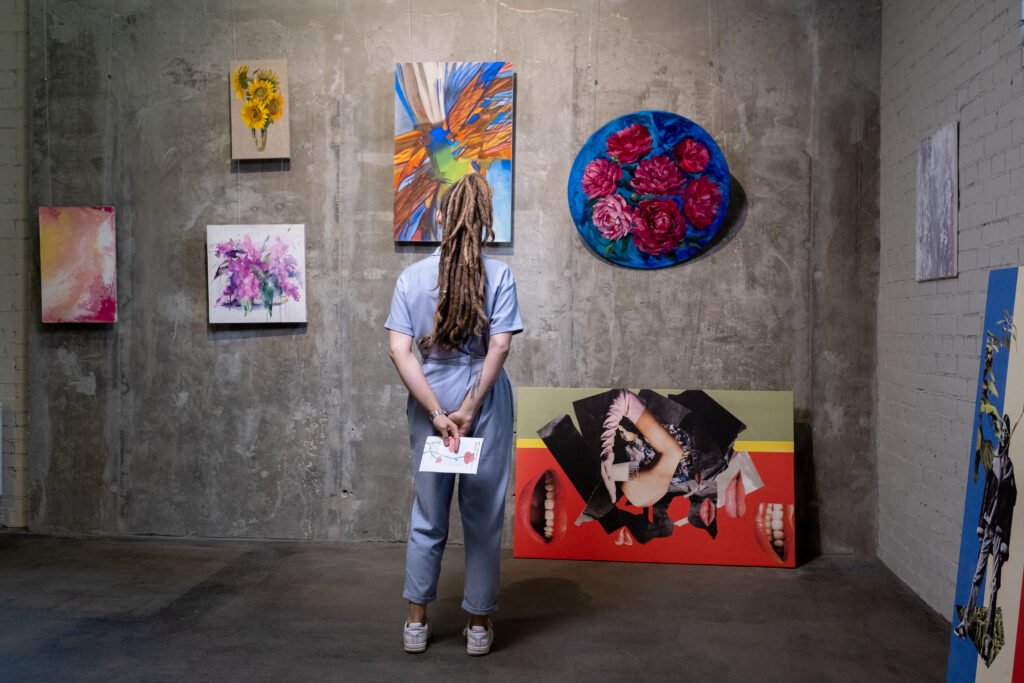Contemporary art is shaped not only through forms and materials but also through concepts such as presence, time, and relationships. In a world increasingly mediated by screens, notifications, and constant distractions, the notion of being present assumes symbolic and political value. Many artists work directly with this idea, exploring what it means to be here and now—before a work, a body, or a space.
Presence can manifest in silence, pause, emptiness, or, conversely, in gesture, action, and shared energy. For this reason, contemporary artists employ diverse resources to evoke in the audience a sense of full attention and genuine engagement.
In the 21st century, by addressing this duality between silence and movement, art proposes experiences that go beyond visual contemplation and approach direct, sensory living.
Presence as Gesture: The Body in Action in Contemporary Art
Since the 1960s, the body has become one of the main supports of contemporary art. Performances, public actions, and process-based works place gesture at the center of creation. The artist’s presence, often live, transforms the work into a unique event marked by time and interaction with the spectator. Artists like Marina Abramović explore the physical and emotional limits of presence, creating moments of intense connection with the audience.
These works are not mere scenes to be watched. They demand the attentive, active, and committed presence of the observer. Gesture here is not just movement; it carries intention, tension, and meaning. Many artists also use the environment itself as an extension of the body, interacting with architectural space, natural landscapes, or urban flow. This direct relationship between body, gesture, and context broadens the work’s experience and reinforces its communicative power.

Artists such as Tino Sehgal and Anne Imhof create works that are built in encounter. They transform the gallery or museum into a living stage, where present time becomes the raw material of art. These artists do not seek a final object but a moment that happens with and for those present. The gesture, however subtle, becomes art through the attention it awakens.
Furthermore, gesture can take many forms: a glance, a walk, a breath. It can happen in silence or amid noise. Its strength lies not in grandeur but in the intensity of the lived moment. This appreciation of the present, so rare in everyday life, gains special meaning in artistic practice, becoming an invitation to slow down and perceive.
Silence as Presence: Empty Space and Extended Time as Language
On the other hand, many contemporary artists work with silence as a form of presence. Instead of filling all senses with stimuli, they create gaps, pauses, and voids that activate the audience’s sensitivity. The absence of sound, color, or movement can become as expressive as an intense gesture. Along these lines, the work invites the spectator to fill the space with their own listening, perception, and presence.
James Turrell’s minimalist installations, for example, use light and space to provoke an almost meditative experience. His immersive environments invite silent contemplation and deep perception. Artists like Agnes Martin explore repetition and subtlety as ways to create visual silence, where every line and shade suggests balance, rhythm, and introspection.
Silence also appears as a form of resistance to the overload of information and stimuli in the contemporary world. It offers a necessary pause, an opportunity to inhabit time differently. This type of work does not demand immediate understanding but availability to listen to what is unsaid, to see what barely appears. In this sense, silence becomes absolute presence.
Many works combine silence and gesture, suggesting that presence is not only physical but also emotional, intellectual, and sensory. By exploring these layers, 21st-century art proposes a new kind of attention, deeper and more connected to the here and now. It requires the audience to slow down, perceive, and participate—even if only with the gaze or thought.
This focus on present time, body, and space redefines the artistic experience. Instead of offering a direct answer or message, contemporary art proposes encounters. Between silence and gesture, it invites us to be, to feel, and to reflect on how we occupy the world with our presence.



